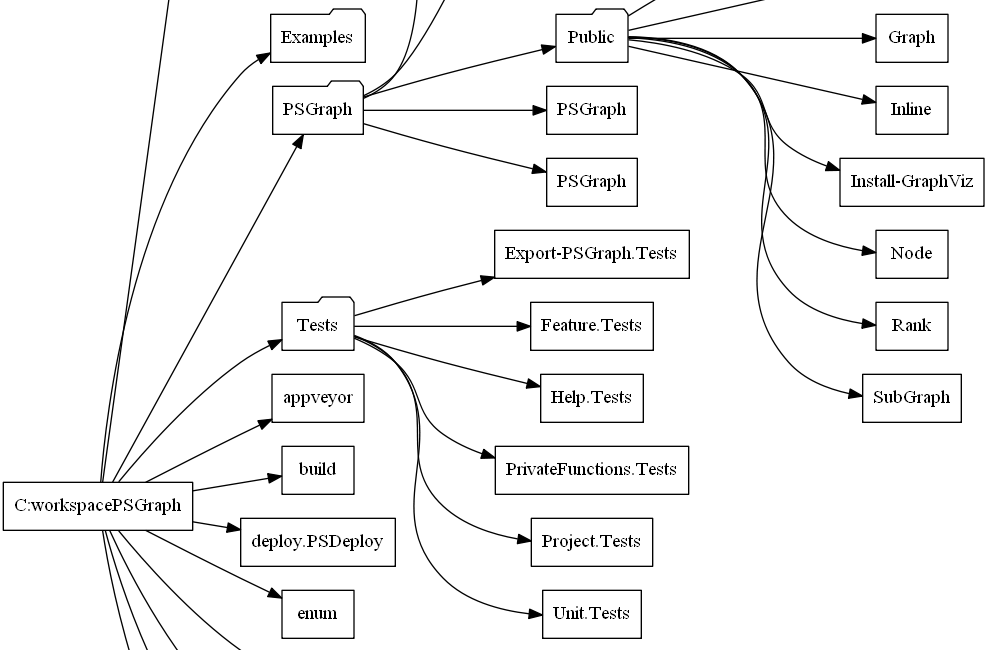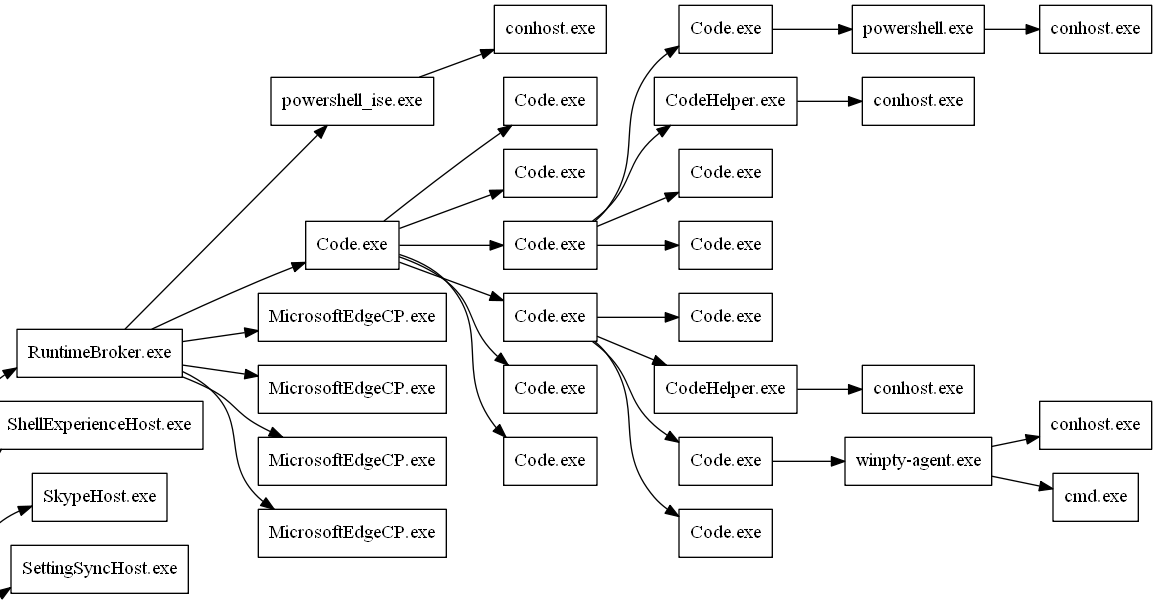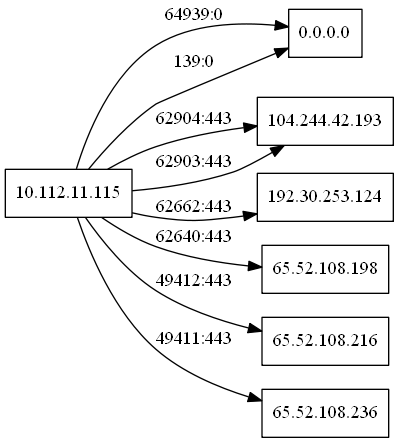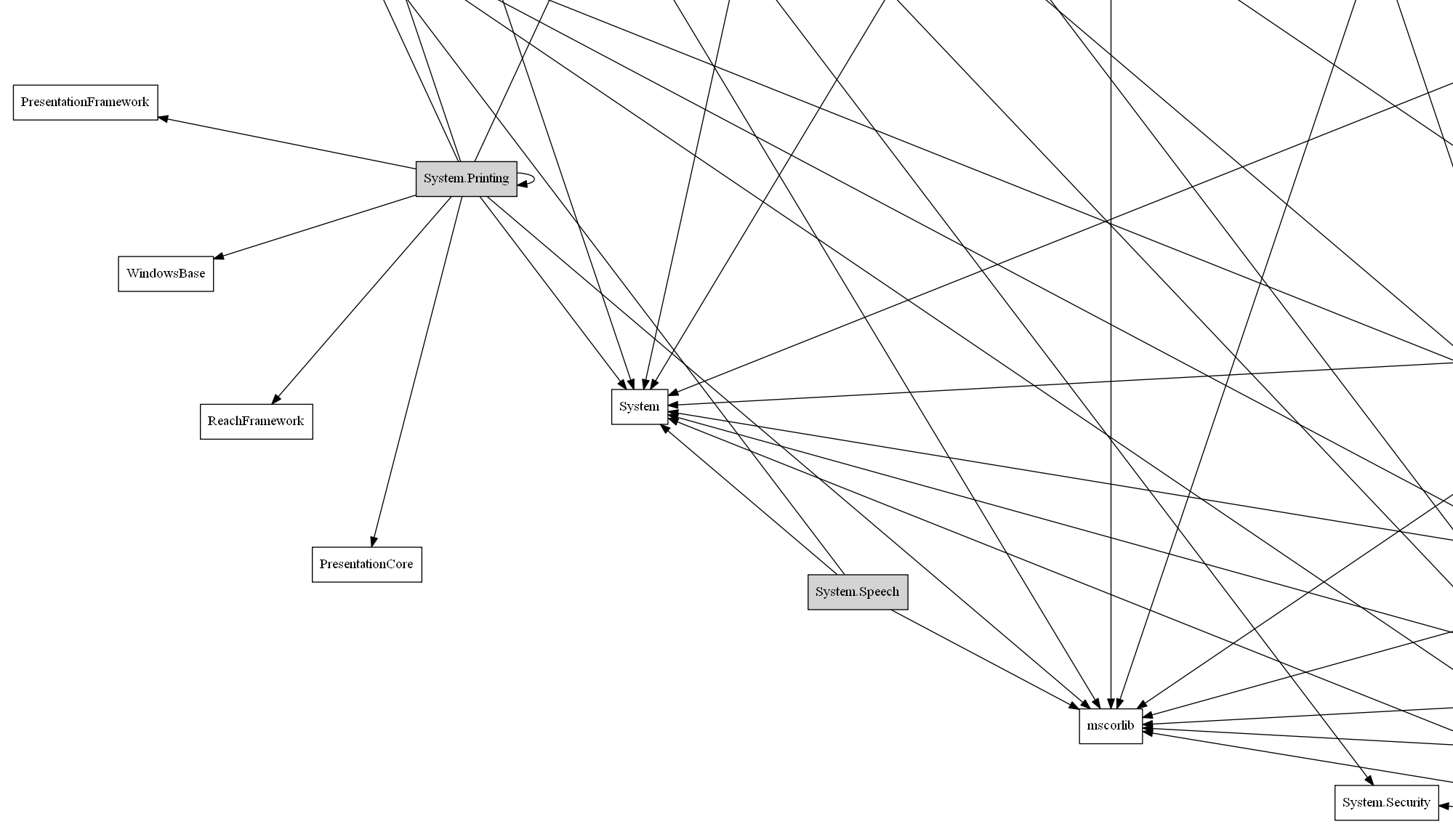Scripted Examples
Here are the examples that really show off what this module can do. Here I take some simple sets of data that is related in some way and quickly build complex graphs with very few lines of code.
Folder Structure
This first example walk the folder structure and displays it as a tree graph. This is a typical hierarchal pattern that is easy to relat to.
$folders = Get-ChildItem C:\workspace\PSGraph -Directory -Recurse
graph folders {
node @{shape='folder'}
node $folders -NodeScript {$_.fullname} @{label={$_.basename}}
edge $folders -FromScript {split-path $_.fullname} -ToScript {$_.fullname}
} | Export-PSGraph -ShowGraph
This one also includes the files in the folder. Click on the image to see the whole chart. I used the rankdir='LR' to make it flow from left to right.

$files = Get-ChildItem C:\workspace\PSGraph -Recurse
graph folders @{rankdir='LR'} {
node @{shape='box'}
node $files.Where({$_.PSIsContainer}).FullName @{shape='folder'}
node $files -NodeScript {$_.fullname} @{label={$_.basename}}
edge $files -FromScript {split-path $_.fullname} -ToScript {$_.fullname}
} | Export-PSGraph -ShowGraph
Process info
Because processors have owners, we can also chart the relationships between them. Click on the image to view the whole chart.
$process = Get-CimInstance -ClassName CIM_Process
graph processes @{rankdir='LR'} {
node @{shape='box'}
node $process -NodeScript {$_.ProcessId} -Attributes @{label={$_.ProcessName}}
edge $process -FromScript {$_.ParentProcessId} -ToScript {$_.ProcessId}
} | Export-PSGraph -ShowGraph
Network Connections
Here is a mapping of active network connections from one machine to everything it is connected to.
$netstat = Get-NetTCPConnection | where LocalAddress -EQ '10.112.11.115'
graph network @{rankdir='LR'} {
node @{shape='rect'}
edge $netstat -FromScript {$_.LocalAddress} -ToScript {$_.RemoteAddress} @{label={'{0}:{1}' -f $_.LocalPort,$_.RemotePort}}
} | Export-PSGraph -ShowGraph
We can take it the next step and map our processes to a network connection.
$netstat = Get-NetTCPConnection | where LocalAddress -EQ '10.112.11.115'
$process = Get-Process | where id -in $netstat.OwningProcess
graph network @{rankdir='LR'} {
node @{shape='rect'}
node $process -NodeScript {$_.ID} @{label={$_.ProcessName}}
edge $netstat -FromScript {$_.OwningProcess} -ToScript {$_.RemoteAddress} @{label={'{0}:{1}' -f $_.LocalPort,$_.RemotePort}}
} | Export-PSGraph -ShowGraph
Assembly Information
We can also map assembly dependencies on each other.
This one maps several things in a folder. It also fills in the local assemblies to make it easier to spot external references. This one gets complicated fast if you parse an entire folder.
$files = Get-ChildItem 'C:\Program Files\Reference Assemblies\Microsoft\Framework\v3.0\System.*' -file -Filter *.dll
$loaded = $files | %{[reflection.assembly]::LoadFile($_.FullName)}
graph assemblies @{rankdir='LR'} {
node @{shape='rect'}
node $loaded -NodeScript {$_.getName().name} @{style='filled'}
edge $loaded -FromScript {$_.getName().name} -ToScript {$_.GetReferencedAssemblies().name}
} | Export-PSGraph -ShowGraph -LayoutEngine Circular




